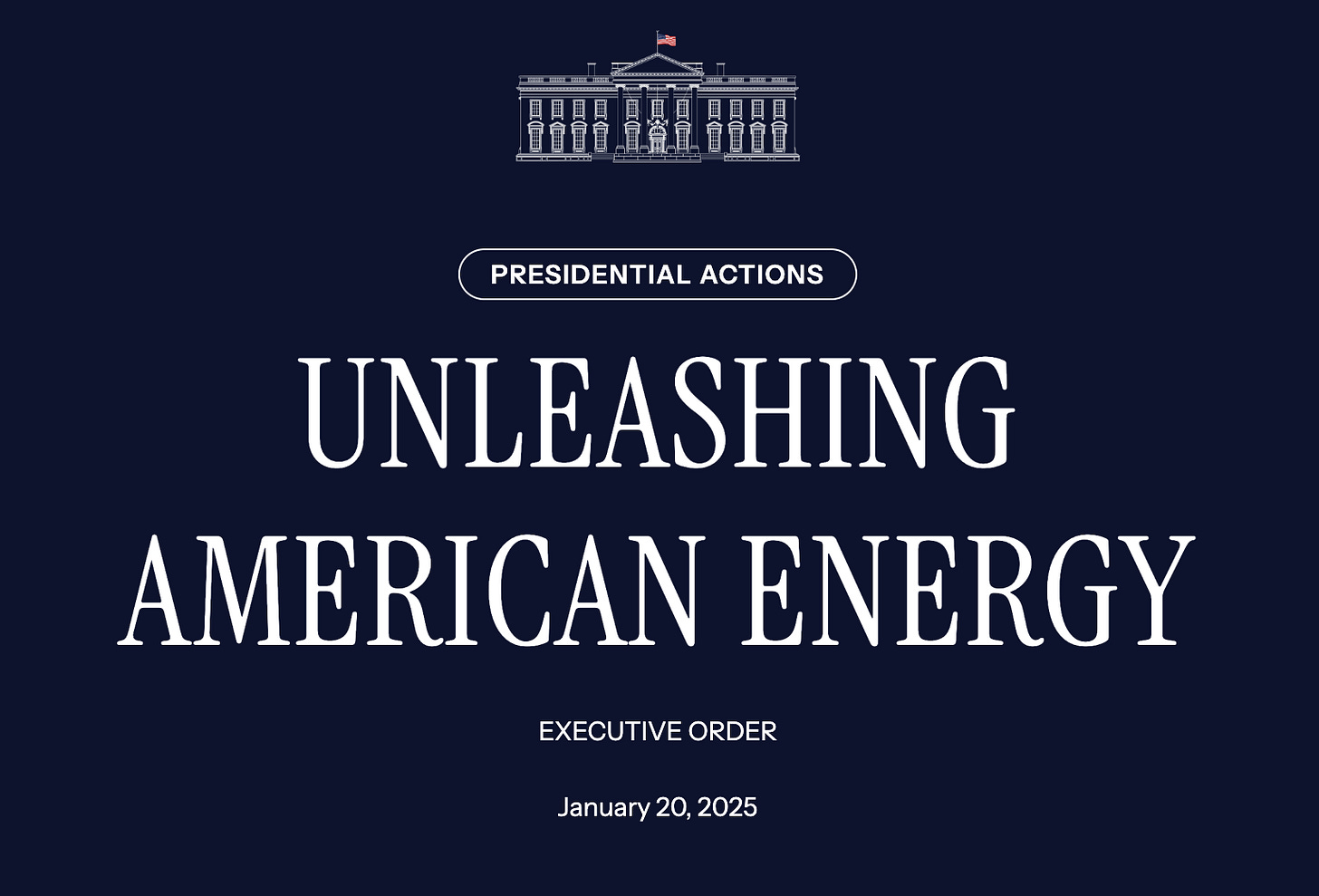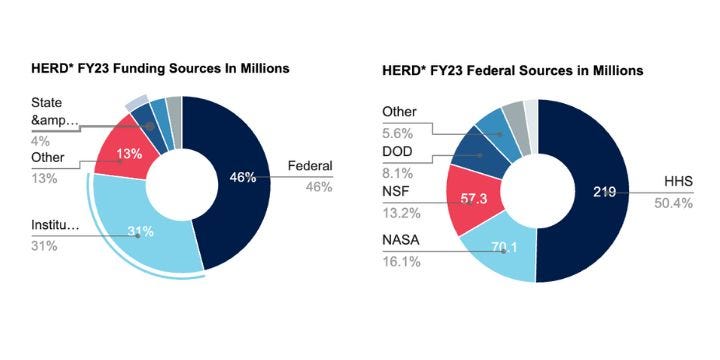A doozy of a week
Sorting through Trump's executive orders, with big dollars at stake.
It’s a mess right now.
Elected officials in southern Arizona - and countless nonprofit partners - are scrambling to figure out how the dozens of executive orders signed by President Donald Trump last week will impact their agencies.
Tucson City Councilman Kevin Dahl said in his newsletter Friday that Trump’s actions already made “historic changes,” including pulling out of the Paris Climate Accord (for a second time) and ending the country’s membership with the World Health Organization.
But Dahl said Trump’s policies will have a huge impact locally as well.
“I realize that local government is more important than ever when it comes to what Tucsonans value; affordable housing, water security, climate change mitigation, heat resiliency and compassionate policing,” Dahl wrote. “Historically, the Federal government has been our partner on these issues. As things continue to change, we will need to step up.”
So how does Tucson step up? No one is really sure.
Take for instance the $20 million grant announced last November by Congressman Raúl Grijalva that went to the Primavera Foundation. The money was meant to help low-income residents in Tucson and South Tucson retrofit homes to make them more energy efficient, install solar panels, and implement rainwater harvesting systems, as well as prevent evictions.
The federal funding came from the Environmental and Climate Justice Block Grant Program, part of the Inflation Reduction Act. The IRA was directly targeted by one of the executive orders signed by Trump last week.
The order paused all funding related to the Infrastructure Investment and Jobs Act (IIJA) as well as the IRA, both signed by President Joe Biden.
Just to add to the confusion, the Trump Administration put out a statement a few days later saying the pause in funding only applied to certain programs related to electric vehicle production incentives and programs that discouraged new mining for fossil fuel.
Tisha Tallman, the CEO at the Primavera Foundation, said they’ve already entered into contracts with private companies to perform the work outlined in the grant, beginning to use some of the $20 million.
If the money from the grant is put on hold indefinitely, Tallman says residents in Tucson and South Tucson will be stuck with the status quo of high energy costs and few resources for those facing eviction, at least for now.
“I am hopeful, I know Tucson always rises to the occasion,” she said. “We will find other ways to fund a climate resilient community.”
She could be right. The Biden Administration had put out a statement that roughly 84% of Inflation Reduction Act funds have already been "obligated,” meaning agencies have signed contracts with third parties, shielding grant recipients from having unspent money get clawed back.
Academia takes a hit
Over at the University of Arizona, a separate executive order signed by Trump related to the National Institutes of Health could make a major dent in their future budgets.
UA officials did not respond to multiple requests for comment, but the figure below is instructive on how much the Tier 1 research university depends on federal funding.
Two years ago, $955 million of its $2.7 billion annual budget came from the federal government. Roughly half of that federal funding came from the U.S. Department of Health and Human Services (HHS), which is the parent agency to the NIH.
It’s worth noting that when the UA was having a serious budget crisis a few years ago, the figure was $140 million.
Advice from Arizona State University officials to researchers on Friday might be helpful for their peers at the UA. ASU has started publishing updates for researchers to help them understand how federal funding can be spent after the myriad executive orders.
We don’t get federal grants, which is fine with us. It just means no president can cut our funding! But we do need subscribers like you to keep the news flowing.
Still sorting it out
Pima County spokesman Mark Evans said the County is assessing all the executive orders in cooperation with the Pima County Attorney’s Office to see how they impact various programs.
One concern specific to the IRA and IIJA grants is whether the federal government will pay the county back for work completed by third-party contractors.
“We don’t know if those (reimbursements) will be paid,” Evans said.
One high-profile example of those reimbursements is the County’s effort to support asylum seekers for the few days they’re in Tucson. In light of Trump’s executive orders on federal funding, and a crackdown on asylum at the U.S. - Mexico border, the County shut down both of its shelters for asylum seekers last week.
It’s less clear how other county programs will be impacted by the executive orders.
The Pima County Department of Environmental Quality is waiting for direction on whether it can spend the remaining money it has from a $1 million four-year Climate Pollution Reduction Grant (CPRG) from the EPA it got in 2023. That grant was also funded by the IRA.
In a way, it could’ve been worse. The County had applied for a $150 million grant tied to the Inflation Reduction Act to better identify sources of greenhouse gas emissions, but they didn’t get it.
We reached out to several city and county departments for comment on other grants, but did not receive an immediate reply.
Tucson officials are also busy reviewing the executive actions. The big question is whether the city’s planned water-purification facility, backed by $86.7 million from the U.S. Bureau of Reclamation, will move forward.
As messy as it sounds, the funding also comes from the IRA, which sets aside hundreds of millions of dollars for long-term water conservation projects.
Privately, some officials are worried how Congress and the Trump administration will dole out federal dollars in the future.
For the city, one of the major concerns is how to pay for cleaning up contaminated water wells near the Davis–Monthan Air Force Base.
The city is suing the federal government over groundwater contamination related to D-M’s use of firefighting foam that contains PFAS (“forever chemicals” that break down slowly and cause cancer and other illnesses) for decades. These compounds were used despite research going back to the 1970s showing they were toxic.
What does this have to with last week’s executive orders? The Trump administration just killed a Biden-era proposal to reduce the amount of PFAS that can be discharged into aquifers by private companies.
Beyond just Tucson, a regional concern is the planned widening of the I-10 Interstate between Phoenix and Tucson, which is impacted by one of Trump’s executive orders. Democratic Rep. Greg Stanton of Phoenix, posted a copy of his letter to the Trump administration saying he would fight to keep the $95 million already pledged by the federal government.
In yet another executive order, Trump put in place a hiring freeze that could affect the numerous federal agencies that operate in southern Arizona, including the courts and the postal service. We don’t have a number for Tucson but statewide there are 34,150 federal employees.
Pushing back
Amid the chaos caused by the executive orders, small acts of defiance are emerging in Southern Arizona.
The Tucson City Council instructed City Attorney Mike Rankin to back up Arizona Attorney General Kris Mayes as she challenges Trump's executive order attempting to end birthright citizenship.
The City of South Tucson said their police department won’t participate in federal immigration raids and Pima County Sheriff Chris Nanos says his deputies will also stay out of immigration enforcement.
Local activists are running simulation drills to prepare for Border Patrol raids and offering training on what to do if there is a future crackdown.
And there is sure to be more to come as local officials and nonprofits dig in for the next four years.
Rest assured, the Tucson Agenda will be here helping you keep track of it all.






Amazing thorough reporting, Joe. Delighted to see you on the side of the watchdog angels
Thank you for an excellent report on what we are learning of current and potential local impacts of the executive orders. While at least some will be challenged in the courts, it is impossible to predict how that will turn out.